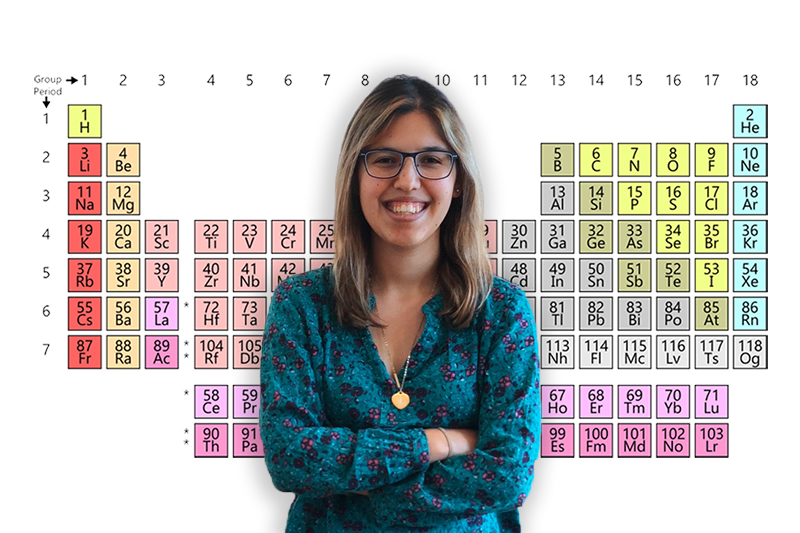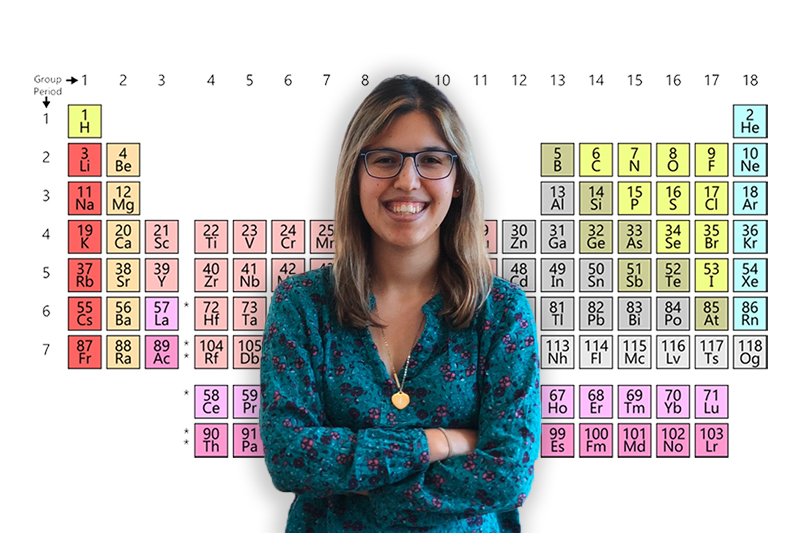Baylor doctoral student earns spot on Periodic Table of Younger Chemists


Samantha Yruegas was recognized as one of the world's top young chemists.
Contact: Whitney Richter, Director of Marketing and Communications, Office of the Vice Provost for Research, 254-710-7539
Written by: Blake Thomas, Office of the Vice Provost for Research
WACO, Texas (Feb. 12, 2019) – Samantha Yruegas, a fifth-year Ph.D. student in Baylor’s department of chemistry and biochemistry, has been named to the Periodic Table of Younger Chemists by the International Union of Pure and Applied Chemistry (IUPAC). The program celebrates the International Year of the Periodic Table by recognizing 118 young chemists—one for each element of the periodic table—who embody the mission and core values of IUPAC through their research, teaching and outreach.
Yruegas was selected by IUPAC to represent erbium on the periodic table of elements, but her research centers on another element, boron.
“We’re interested in making molecules that are both new and have utility toward materials,” she said. “We start with typical organic building blocks and incorporate boron atoms within the structure. Then we explore the reactivity and electronic properties of the resulting molecules. We’d like to be able to make compounds that are a specific color or fluoresce in a specific way so they can be used in OLED [Organic Light Emitting Diodes] products, whether that’s for lighting or for a display like a TV.”
In addition to potential applications in electronics, Yruegas’ work could potentially lead to pharmaceutical advances as these types of compounds have been used to treat dermatological ailments such as eczema and fungal infections.
Caleb Martin, Ph.D., assistant professor of chemistry and biochemistry in Baylor’s College of Arts and Sciences, serves as Yruegas’ doctoral advisor. He says Yruegas’ honor is well-deserved.
“Samantha has not only been an extremely productive researcher in her graduate career, contributing to twelve publications to date,” Martin said, “but has also carved out time for outreach activities at Baylor and in the surrounding community. Her ability to trouble-shoot and efficiently complete projects both independently and with collaborators has led to this success.”
After completing her Ph.D. at Baylor, Yruegas will begin work as a postdoctoral fellow in the Chirik Group at Princeton University under the leadership of Dr. Paul Chirik, Edwards S. Sanford Professor of Chemistry.
Yruegas is passionate about her research, but she brings just as much enthusiasm to mentoring undergraduate students who work alongside her. It was that mentoring experience that helped Yruegas solidify her plans to pursue a career in academic research and teaching.
“The first time I published a paper with an undergraduate was incredibly rewarding,” said Yruegas. “I really enjoy going through the process of discovery with students and helping them overcome the inevitable setbacks that will happen in research.”
A first-generation college student, Yruegas is active in outreach efforts that promote diversity in science. She is active in the local chapter of Women in Science and Engineering as well as the Society of Mexican American Engineers and Scientists and the American Chemical Society’s Chemists with Disabilities committee. She also works with Mission Waco, a local nonprofit, on summer programs that encourage low-income K-12 students to explore scientific fields as possible career options.
“I’m the first in my family to go to college. If you’d asked me when I was six years old if I was going to grow up to be a chemist, I wouldn’t have thought that was even an option,” she explained. “That’s why I think it’s so important to be vocal and educate people about opportunities.”
For Yruegas, the goal of making new discoveries in chemistry is inseparable from the need to create a culture of inclusivity where underrepresented voices can be part of the scientific process.
“I’m always excited to talk with anyone with an interest in science and help them find ways to get involved,” she said. “Science is very collaborative and we all have ideas to share. It’s great if we can do that together.”